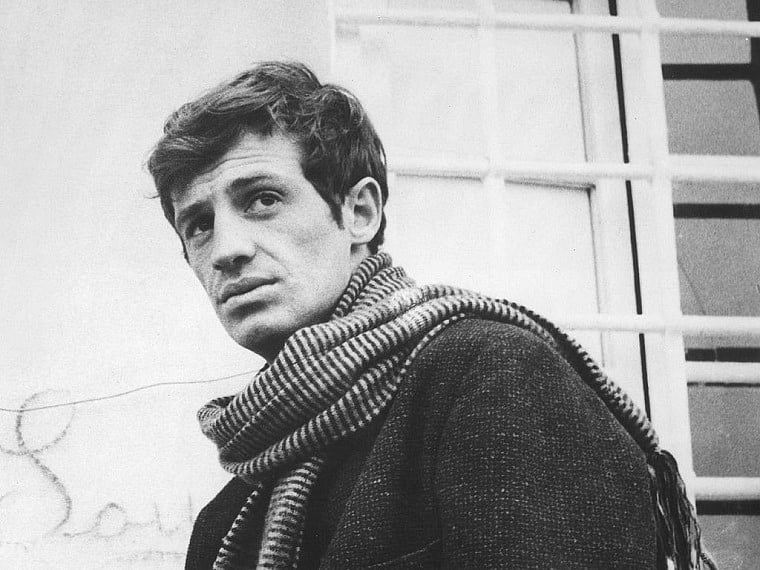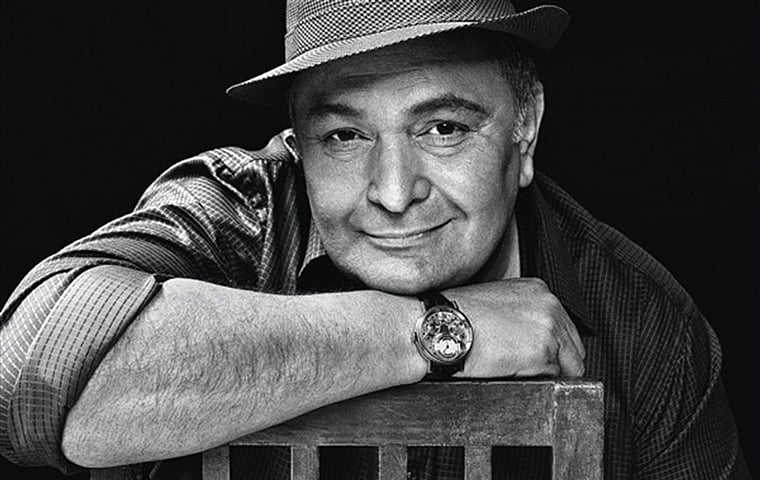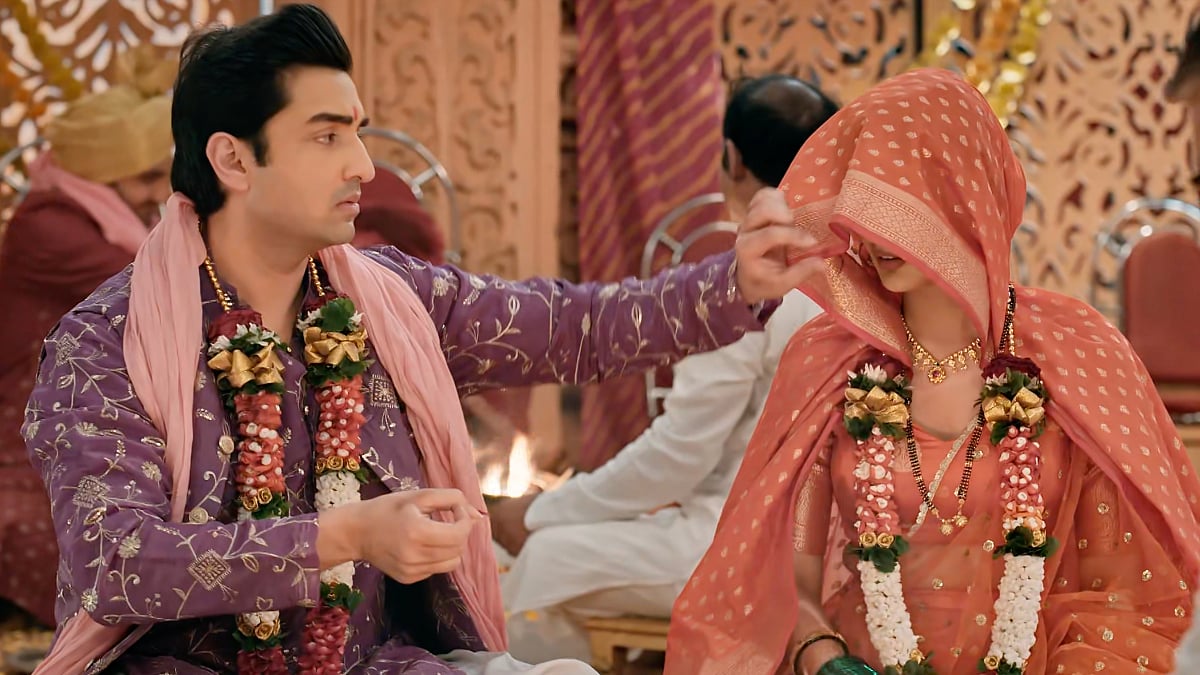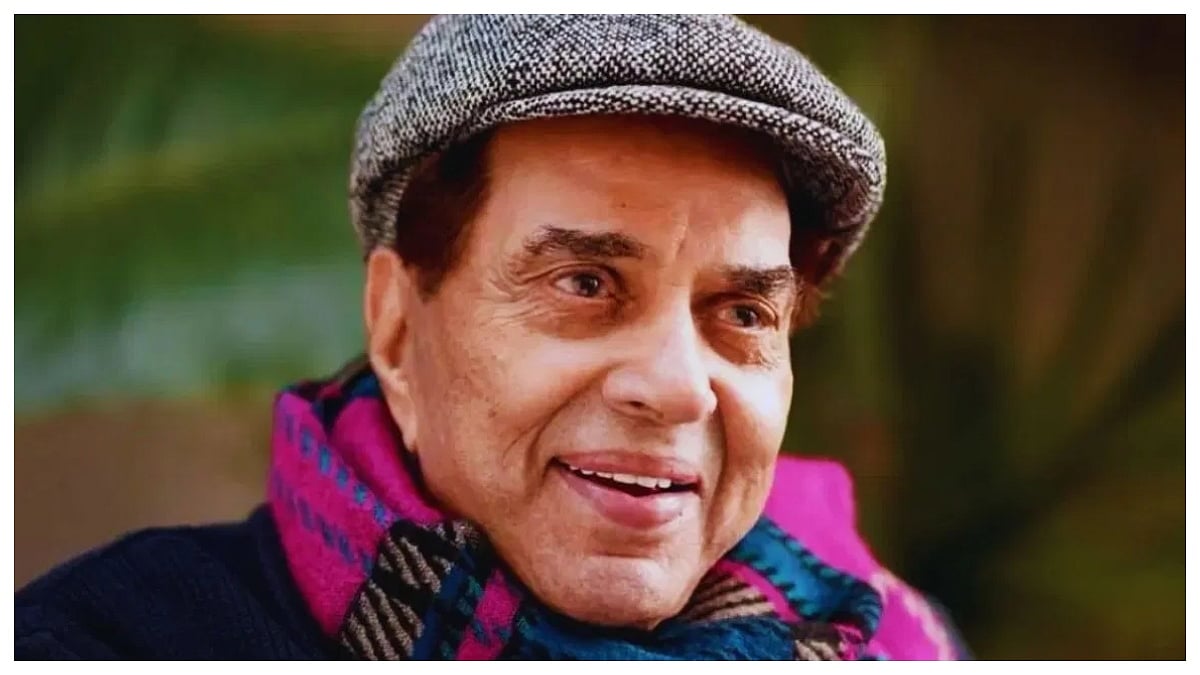Earlier this month, on the 69th birth anniversary of Rishi Kapoor, the makers of his swansong, Sharmaji Namkeen, released its first look, thanking Paresh Rawal ‘who completed the film by agreeing to take the sensitive step of portraying the same character played by Rishiji’ — a rare occurrence in the history of cinema.
From the silent film Sixty Years a Queen in 1913, which featured Rolf Leslie in 27 characters, to Sanjeev Kumar essaying nine in Naya Din Nai Raat (1974), an actor playing multiple characters in a play or a film is as old as these art forms. Double and triple roles were a staple of mainstream Hindi cinema all through the 1970s and ’80s.
Not so common is multiple actors playing the same character in a film. Offhand, the only Hindi film attempting something similar that comes to mind is one that starred Rishi Kapoor, Yeh Vaada Raha (1982). The heroine’s character, Sunita, is played by two actors thanks to a dubious plot contrivance: An accident that disfigures her, leading to a plastic surgery that changes Poonam Dhillon to Tina Munim!
The most celebrated of the few instances one recalls in international cinema is That Obscure Object of Desire (1977), by that badshah of the bizarre, Luis Bunuel, in his final film. Bunuel cast Carole Bouquet and Angela Molina in the role of the maid Conchita.

In his autobiography My Last Sigh, the director wrote that the shooting had come to a stop following an argument with his actress (the book Luis Bunuel: The Complete Films identified her as Maria Schneider). The producer, Serge Silberman, decided to abandon the film altogether. “I suddenly had the idea (after two dry martinis) of using two actresses in the same role, a tactic that had never been tried before. Although I suggested it as a joke, Silberman loved it, and the film was saved.”
Critics were enamoured. In the New York Times, Vincent Canby said, “Carole Bouquet as the coolly enigmatic Conchita, and Angela Molina as the earthy, flamenco-dancing Conchita… The Conchita, who goes into the bathroom to change, changes not only her clothes. Miss Bouquet goes in, but Miss Molina comes out.”
The death of Heath Ledger led to something similar in Terry Gilliam’s The Imaginarium of Doctor Parnassus (2009). Gilliam abandoned the idea of using computer-generated imagery for Ledger’s character, Tony, and eventually made what he described as ‘the quantum leap’, casting Johnny Depp, Colin Farrell and Jude Law as Tony, albeit “as transformed versions of the character who journeys across dreamlike states.” Ledger’s footage was retained for the character’s ‘real’ world while the three new stars made up the scenes set in the fantasy realms.

In Todd Solondz’s Palindromes (2004), in contrast, the decision to have eight actors — an overweight African American woman, an androgynous boy, a six-year-old girl, four teenagers and Jennifer Jason Leigh, who was three times as old as the character — portray the protagonist Aviva was driven by what the film probably intends to convey: the fragility of identity, for one. Or, as Ebert says, “We look for a clue in the movie’s title. Is Solondz saying that it doesn’t matter which side of the issue we enter from, it’s all the same, and we’ll wind up where we started?” As the actors playing Aviva mutate, it has the disquieting sense of keeping the viewer off-balance, as any conclusion we arrive at in one segment no longer holds valid in the next.
The experimentation is further elaborated in Canadian filmmaker B.P. Paquette’s Perspective (2012). The three actors in the film keep changing the characters they play, not only between scenes or within a scene but even in the middle of an exchange of dialogues. In the first chapter, Stéphane Paquette and Patricia Tedford are a domestic couple while Pandora Topp plays Patricia’s friend. All three are named Alex.

Then we have the chapter beginning again with an identical narrative but with the actors swapping characters: Patricia becomes Stéphane’s best friend while Pandora and Stéphane are the domestic couple. Speaking about his decision, the director said in an interview, “We’re not letting the audience identify a character with an actor. So, at all times, all of the actors are all of the characters. The audience can neither immediately nor continually identify a specific character with a specific actor. It democratises the three characters."
While Sharmaji Namkeen may not aspire to or go for such weird experimentation, there is no doubt that Paresh Rawal stepping into Rishi Kapoor’s character could well make for an intriguing watch.











